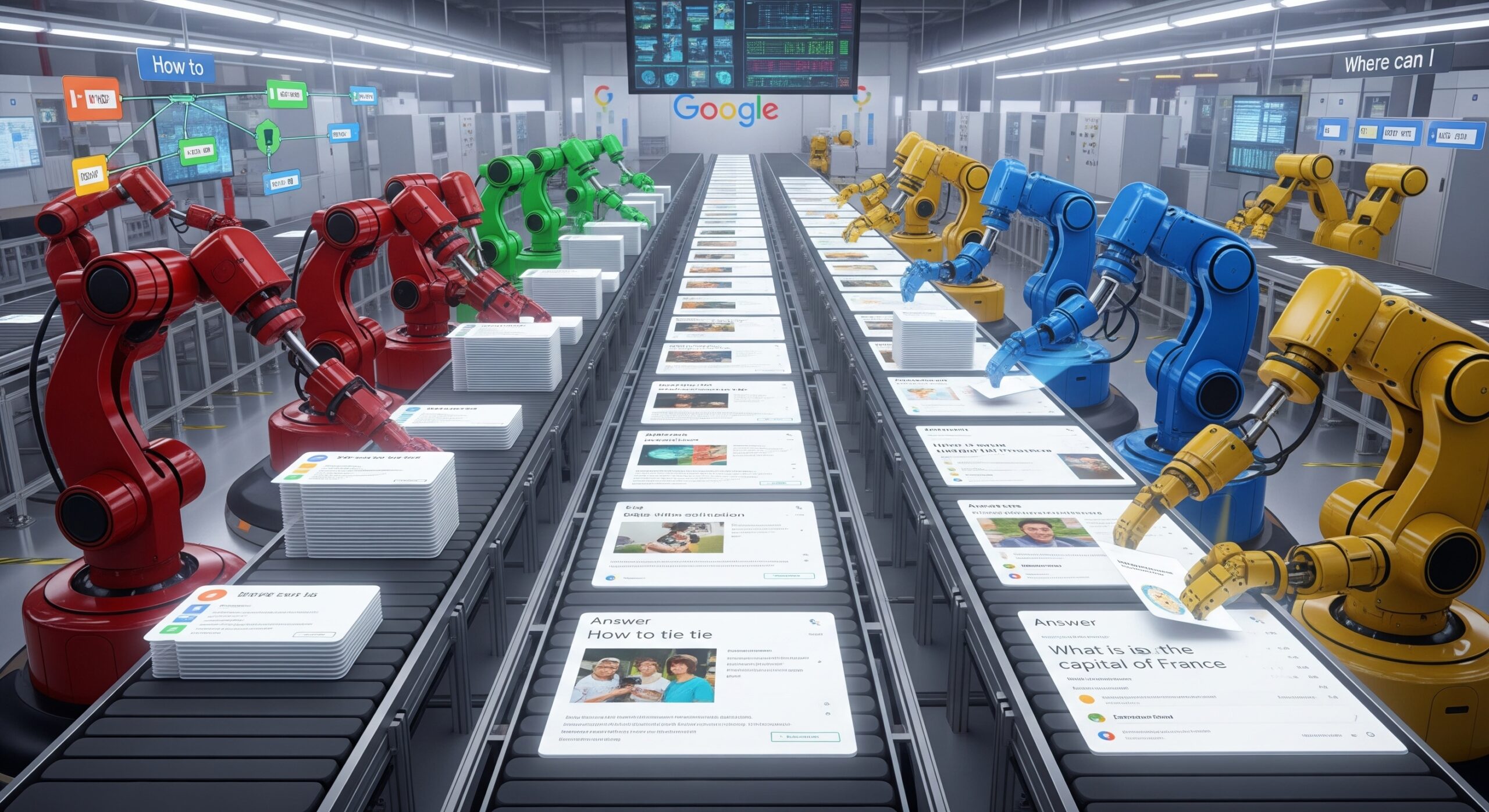Your personal habits have changed over the past year or two. Where you once used Google, you now probably consult an AI tool, especially when you’re exploring an unfamiliar topic. Research backs this up, showing that AI chatbots and AI Overviews have become the primary channels for early information discovery.
This means top-of-funnel searches, things like definitions, statements of basic facts, and comparisons have become zero-click searches. AI models excel at providing instant synthesis of this sort of query. Basic how-to guides for stable topics like “How to Read a Legal Opinion” have also been displaced by AI:
This is reflected in the aggregate data for the publishing industry. Traffic to the 500 most-visited publishers dropped 27% year-over-year since February, according to a report by The Current. That’s a drop of over 64 million visits per month, and AI chatbots have only provided 5.5 million referrals to replace those losses.
We’re reliving the days of replacing analog dollars with digital dimes, but now we’re left with AI pennies.
For publishers this means the value of your content isn’t solely measured by clicks and sessions anymore. Your content is being scraped and repurposed by AI models, providing a different—and maybe more valuable—form of exposure.
That said, Google remains the largest traffic referrer on the web. Its search results ground its AI models. ChatGPT and Perplexity are building their search ranking systems, sometimes “borrowing” results from Google. Because of this, high-ranking pages still drive traffic referrals and are also more likely to be selected as a citation source for AI-powered search.
So this process is additive, not a replacement of search entirely, but it is nonetheless a fundamental shift, and our approach needs to change with it. We must adapt our practices to this new AI-driven world and that starts with what we measure.
New Metrics for the AI Era
Impressions and clicks are still relevant, but they’re no longer the full picture of SEO success. To truly measure your impact, we need to focus on these new areas:
- Brand Mentions and Citations: You need to monitor how often your brand and content are cited as a source in AI Overviews, ChatGPT, Gemini, and other tools. This is a direct measure of authority and trustworthiness in the AI ecosystem. Tools like Anvil are emerging to help, and traditional SEO platforms like Ahrefs are developing AI-tracking features to provide visibility into these new search environments.

- Bot Activity as a KPI: AI agent requests as tracked by tools like Tollbit or Cloudflare’s AI Audit are a crucial new KPI. This is your “AI traffic,” a direct measure of how much your content is being consumed by these platforms. You can use bot analytics to understand which pages have the most AI impact. This helps us optimize those pages further and identify why other pages aren’t being scraped, which could point to content gaps or structural issues.
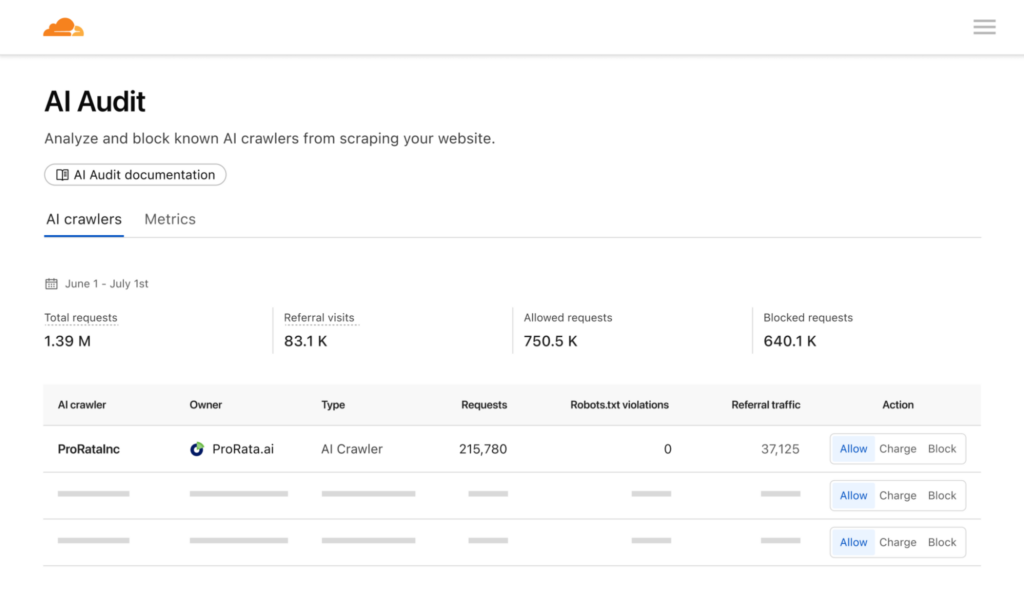
- Branded Search Growth: When AI models cite our content, people remember our brand and may perform a direct search for us later. An increase in branded search queries in Google Search Console or Ahrefs is a strong signal of AI-driven brand awareness.
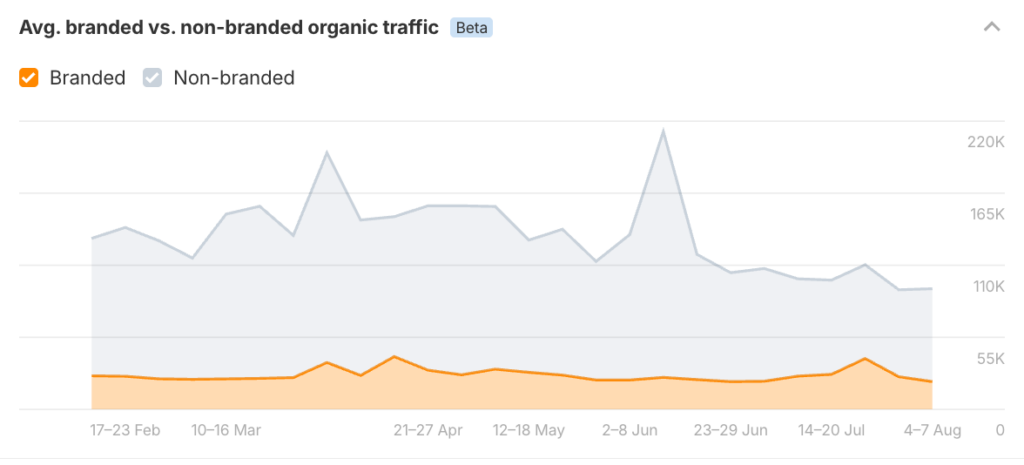
- Content Quality and Trust Signals: In the AI world, trust is becoming more important. Our new metrics should include on-page signals of trust, such as author bios with credentials, transparent sourcing, and strong user engagement. The assumption is that AI models—especially Google’s Gemini—are trained to value these signals, and users who do click through are more likely to be highly engaged.

What Remains (Mostly) Untouched
AI is disrupting a lot of the content world, but it isn’t touching everything. It’s important to understand what content is at least somewhat immune to this trend:
- News: Straight-up news coverage remains one of the least affected of the major verticals. According to a study of AI Overview prevalence by SEMRush “Google is treading lightly around searches for breaking news and real-time information, where there isn’t enough information to present a consensus answer.”

- Google Ad: Monetization features (Ads, Shopping) are paired with AI Overviews less than 1% of the time. By creating high-quality, long-shelf-life content that can be supported by Google Ads, we can build a strong ad-quality rating that out-competes others for these AI-free spaces. When Ads eventually do roll out to AI Overviews and AI Mode, they will be high-visibility placements, so building a stable of high-CTR, high-dwell-time ads now is doubly important.
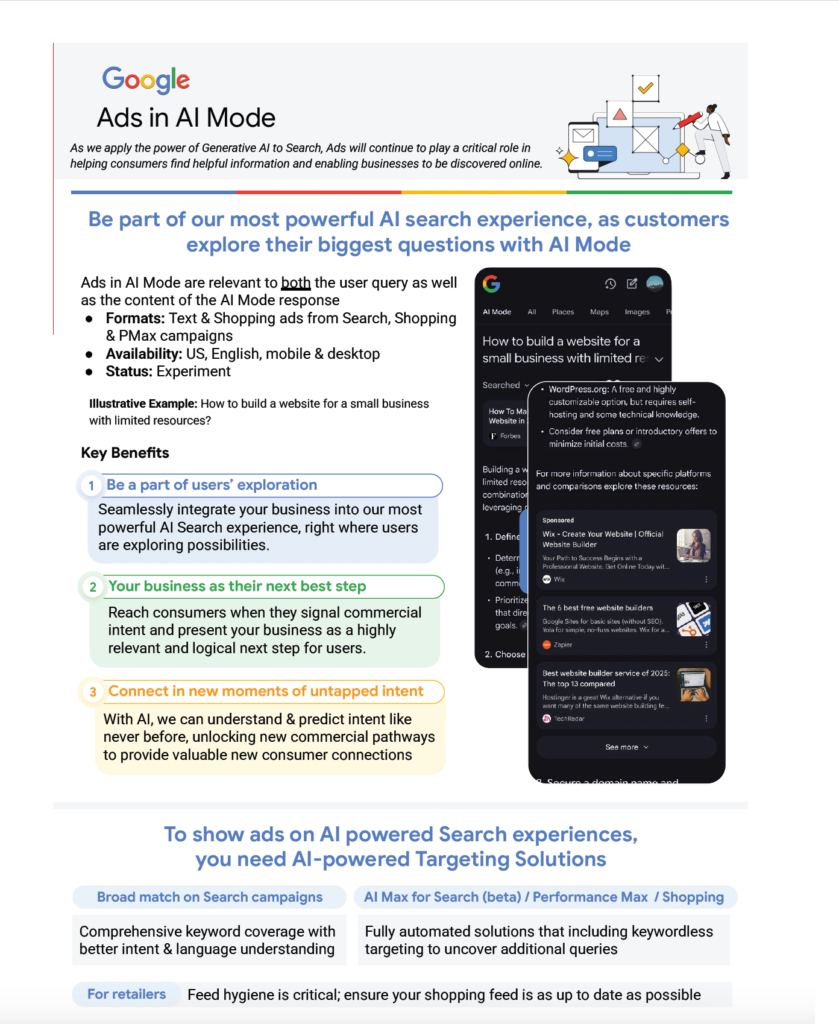
- Controversial Topics: AI overviews and chatbots avoid certain topics such as drugs, weapons, hate speech, and sexually explicit content. Content that touches on these controversial topics is likely to remain discoverable through traditional search for the foreseeable future.
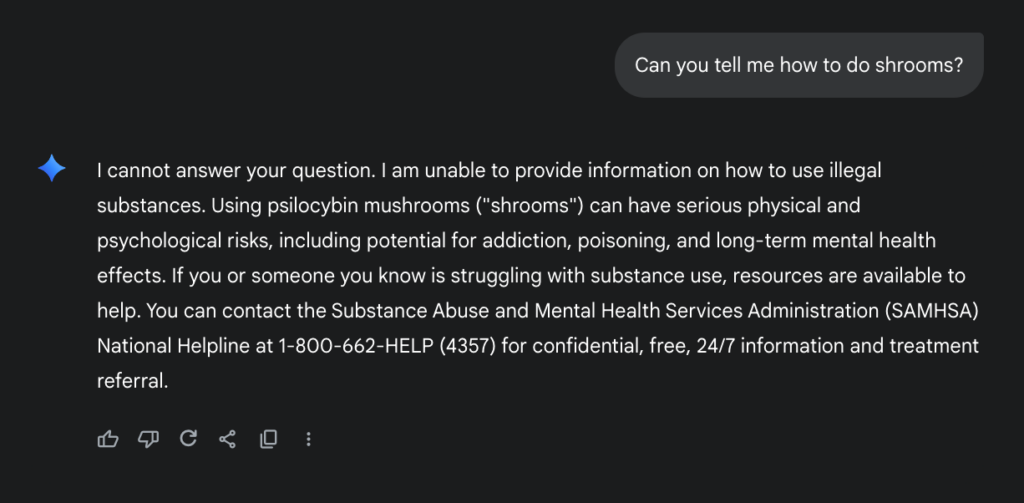
Where You Need to Pivot
We need to adjust your strategy for a world where models are doing the searching for us—often dozens of searches at a time—and then assembling their answers from various sources, which may or may not include a citation. This requires a shift in emphasis toward content that is clear, answers user questions, and is well-structured, all while retaining the uniquely human elements that make your brand valuable.
The Human Advantage
The one thing AI can’t replicate is your unique perspective, first-hand experience, and human touch. Integrate expert commentary, original research, and a distinct brand voice. Your voice is your competitive advantage, and while it might come at a later stage in the discovery process now, its distinctiveness is what drives vital metrics like time on page, engagement rate, and return visits.
- Answer Questions: Focus on answering specific user questions in a conversational tone. Use tools like AlsoAsked and Answer the Public to discover the precise questions users are asking and then create longer-form content that thoroughly answers those questions. Pages that provide real information gain are more likely to be cited by AI overviews and featured in traditional results.

- Use Visuals: Charts, graphs, infographics, or flowcharts can’t be easily summarized by AI and present information in ways that are easier for human beings to understand. AI Overviews are being layered on top of visual search elements like image carousels, featured videos, and FAQs, rather than replacing them.
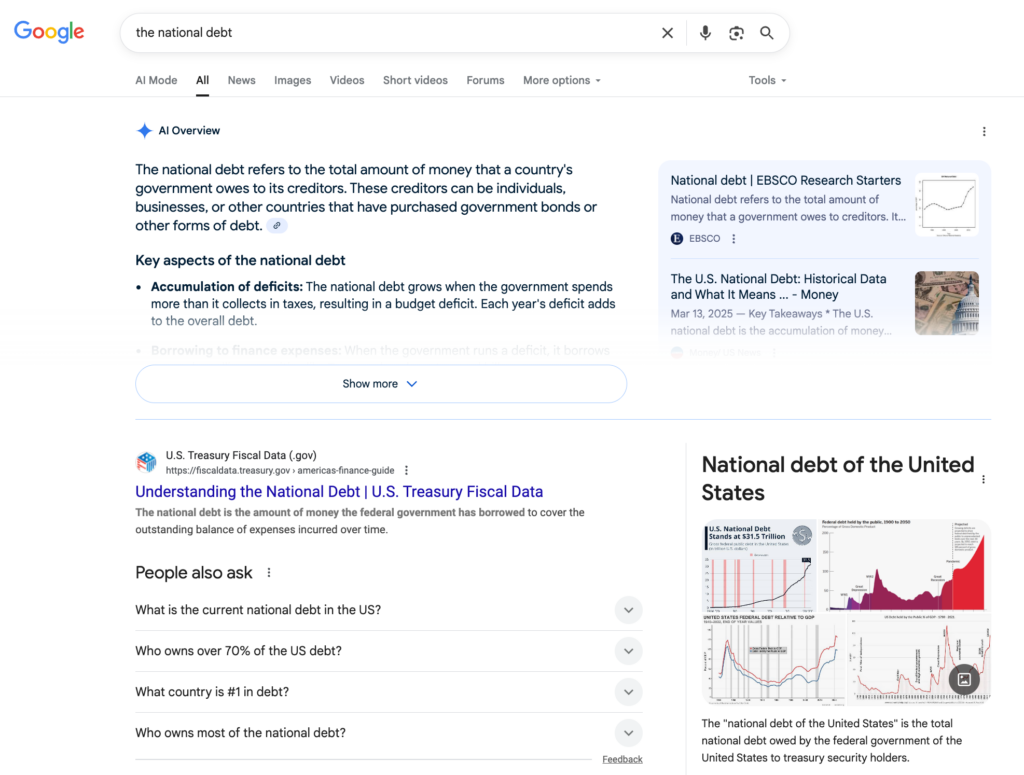
- Lean Into Author Authority: While AI Overview provides a summary, users still seek out and engage with authoritative sources for validation. Trust is now the primary click motivator, with users prioritizing and choosing content from recognized brands and .gov/.edu domains in 58% of cases when such links are present. Author credentials need to be summarized on article pages and outside sources should be referenced to bolster the credibility of your writing whenever possible.
- Push Publication Reputation: E-E-A-T (experience, expertise, authority, and trust) now precedes relevance in the user’s decision-making process. To enhance your publication’s reputation in the AI era, especially given the rise of AI Overviews and zero-click search, your “About” page, and indeed your overall online presence, must explicitly build trust and demonstrate authority.
Showcase awards, recognition, media citations, and reputable endorsements. Feature notable current staff, especially those with wider media recognition, to reinforce the human expertise behind your content. Implement visible editorial guidelines and explicitly highlight them in your navigation to signal trustworthiness.
Embrace Structure
Structure can help us create content that’s great for people but also perfectly suited for AI models to understand, summarize, and cite.
- Employ More On-Page Structure: Use clear H2 and H3 headings, bullet points, numbered lists, and short, concise paragraphs. A well-structured page is easier for both human readers and AI models to understand and navigate, which improves user experience signals that Google uses for ranking.
- Label Content with Schema: Basic schema markup help Google and other AI-powered engines to understand the basics about a piece of content like the author, date, category, and type of content, such as News Article or Scholarly Article. Flagging content as news is of particular importance given how little news content is being touched by AI in Google results right now. Clearly marked news articles are more likely to be highlighted in Top stories boxes, rather than relegated to AI Overview tiny grey links.
- Tag Entities: This is why Tallest Tree created TopicalBoost. It automatically surfaces the people, places, organizations, and concepts that are part of the knowledge graphs, massive databases of interconnected facts. By providing these “entities” in your schema, your content becomes more likely to be accurately understood, cited as a trusted source, and featured in high-visibility placements.
A Non-AI Overview
The rise of AI won’t destroy the ability to create high-value content on the web, but it’s quickly shifting how that value is delivered and measured. While traditional SEO remains vital, “Generative Engine Optimization” is now a crucial part of the value chain.
By redefining our metrics to track brand citations and bot activity, and by focusing on creating structured, entity-rich content that emphasizes trust and human expertise, we can ensure that your content continues to have a powerful impact.
The AI era demands a focus on machine readability and trustworthiness, transforming your content from a mere destination for clicks into a foundational source of authority in the AI ecosystem.

